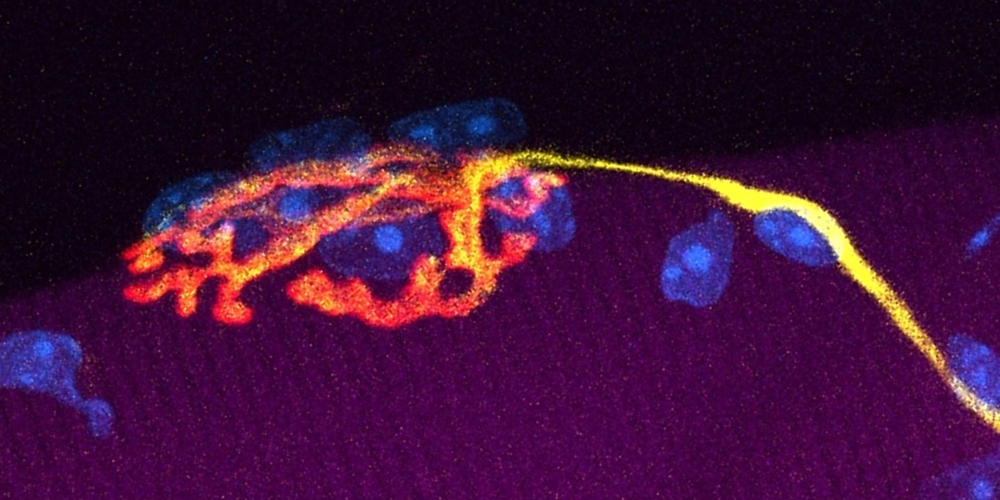“The connection with the silicon industry is crucial for this project”
Silicon-based integrated circuits form the basis of modern-day computers. Professor Richard J. Warburton, physicist and head of the new National Center of Competence in Research SPIN, explains why this established material will play a key role in the development of quantum computers.
17 December 2019
Professor Warburton, quantum computers use qubits instead of bits to perform calculations, which can be implemented in very different ways. Why do you use silicon?
Currently, perhaps 10 or 50 qubits are used in experiments – but this is nowhere near enough for the long-term goal of a functional, powerful quantum computer. If a billion qubits are needed, however, they have to be very small indeed. With silicon, it is possible to manufacture extremely small components, and chips are already made today with several billion silicon transistors. It is precisely this technology that we want to use for a quantum application. In addition, silicon qubits can not only be small, but fast as well. This is very important, because if each operation takes a long time, you have to wait too long for the result.
Semiconductors made of gallium arsenide have often been used for experiments with electron spins. What will change with a switch to silicon?
I see a further advantage that is much more technical: the atomic nuclei of gallium and arsenic have magnetic moments, the so-called spins, that fluctuate, which generates distracting noise, plus it is very difficult to control these nuclear spins. Silicon, on the other hand, has an isotope called silicon-28 with no nuclear spin. It’s perfect, as it eliminates the problem.
If the advantages are so clear, why have you not already worked with silicon?
Although some research groups around the world work with silicon, it is very difficult in a university environment. Industry can do it, but the equipment required is very complicated and expensive. And since the research of most groups over the past 10 or 20 years has focused on gallium arsenide, there’s a lack of knowledge. We are aware of numerous ways to define a qubit with silicon, but no one yet knows which is the best option.
But silicon qubits based on electron spins will eventually prevail?
Definitely! Electron spin is perfect for defining a qubit. But, again, there are many different ways to implement this concept. We still have a very long way to go.
With IBM Research – Zurich, you have a major industrial partner on board. What are you hoping to get out of this collaboration?
This connection between university groups not only at the University of Basel, but also at ETH Zurich and EPFL, and the silicon industry is crucial for the project. The partners at IBM Research – Zurich know how to handle silicon. And they have the Binnig and Rohrer Nanotechnology Center where they can manufacture these tiny components.
What does this mean for your experiments?
We will produce prototypes at IBM, test them here, discuss the results with them and make changes with the aim of building really good qubits. This will keep us busy in the first phase of the project. Looking into the future, there is also the possibility of using a silicon fab (i.e. a chip fabrication plant) to provide a silicon wafer with components. But that’s more of a thing for the second or third phase of the project. Working with the scientists at IBM Research has huge advantages, as the innovation cycles are much shorter. In this way, we hope to make rapid progress.
For a long time, quantum computing was considered a theoretical concept, but today we see a global race to develop feasible technologies. What do you think is the biggest challenge at present?
We scientists have to focus on the basics and optimize the individual elements, which form the foundations for viable solutions. Without this work, it would probably be extremely difficult. You might build a qubit, and then two, 10 and 50, before suddenly hitting a wall. That is interesting quantum physics, but it’s far from being a quantum computer.
A National Center of Competence in Research receives funding for up to 12 years – what is your vision for 2032?
The goal is to have researched everything to build a quantum computer, the individual elements and how best to combine them. The goal is to find a concept for building a scalable quantum computer together with the silicon industry.
Silicon qubits based on electron spin
To perform calculations, quantum computers need qubits – elementary building blocks used for processing and storing information. Qubits can assume two defined states, but due to their quantum physical properties, both states can temporarily overlap. Efficient systems for processing information are only created when several qubits are entangled. With the NCCR SPIN, the Swiss physicists want to build silicon-based qubits that take advantage of the spin of individual electrons.



